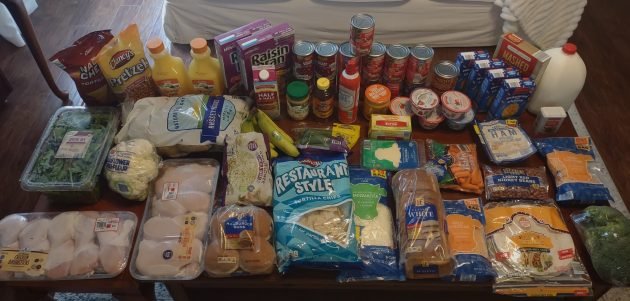Navigating the delicate balance between budgeting and providing wholesome meals for a family can be challenging. However, with strategic planning and thoughtful shopping, it’s entirely possible to nourish your loved ones without overspending. Here’s a glimpse into how one family adeptly managed their grocery shopping and meal planning for an entire week with a budget of $125.60.
Strategic Grocery Shopping: Maximizing Value
The cornerstone of effective meal planning lies in savvy grocery shopping. By focusing on versatile ingredients and bulk purchases, significant savings can be achieved. For this week’s plan, the following items were procured:
- Dairy & Refrigerated Items:
- Shredded Mozzarella Cheese
- Sliced Cheese
- Butter Quarters
- Boneless Chicken Breasts
- Chicken Drumsticks
- Deli Meat
- Greek Yogurt
- Canned & Dry Goods:
- Red Kidney Beans
- Red Beans
- Raisin Bran
- Macaroni and Cheese
- Flour Tortillas
- Instant Mashed Potatoes
- Ground Black Pepper
- Honey
- Creamy Peanut Butter
- Queso
- Whipped Topping
- Produce:
- Bananas
- Cauliflower
- Mini Cucumbers
- Baby Carrots
- Spring Mix
- Broccoli Crowns
- Bakery & Snacks:
- Sandwich Bread
- Hamburger Buns
- Tortilla Chips
- Pretzels
This comprehensive shopping list ensured that the family had all the essentials needed for the week, emphasizing items that could be used across multiple meals.
Diverse and Wholesome Weekly Menu
Planning a varied menu is essential to keep meals exciting and ensure nutritional balance. The following meal plan was curated to utilize the purchased items efficiently:
Breakfasts:
- Oatmeal
- Cereal
- Scrambled Eggs
- Veggie Omelets
- Smoothies
- Zucchini Muffins
Lunches:
- Deli Meat and Cheese Sandwiches with Chips and Carrots (twice)
- Leftovers (three times)
- Macaroni and Cheese with Cucumbers and Grapes (twice)
Dinners:
- Chili with Cornbread
- Hamburger Vegetable Soup (prepared with venison sausage) and Biscuits
- Chicken Pot Pie with Tossed Salad and Grapes
- Enchiladas with Chips and Queso, accompanied by Tossed Salad
- Baked Parmesan Chicken Breasts with Broccoli and Mashed Potatoes
- Cheese Pizza with Roasted Cauliflower
- Leftover Chili served over Baked Potatoes with Shredded Cheese and Green Beans
Key Strategies for Successful Budget Meal Planning:
- Meal Planning: Designing a weekly menu helps in making targeted grocery purchases, reducing impulse buys, and minimizing food waste.
- Ingredient Versatility: Selecting ingredients that can be used in multiple dishes ensures variety without the need for an extensive shopping list. For example, chicken breasts can be used in pot pie, baked dishes, or soups.
- Bulk Buying: Purchasing items like shredded cheese in larger quantities often proves more cost-effective and ensures you have enough for various recipes throughout the week.
- Incorporating Leftovers: Planning for leftovers not only saves time but also cuts down on food costs. Dishes like chili and soup can be made in larger quantities and consumed over multiple meals.
- Seasonal Produce: Opting for seasonal fruits and vegetables, such as zucchini and cauliflower in the fall, often leads to better prices and fresher options.
By implementing these strategies, the family effectively provided nutritious and varied meals for the week, all while adhering to a modest budget. This approach underscores the importance of thoughtful planning and resourcefulness in achieving financial and dietary goals.




